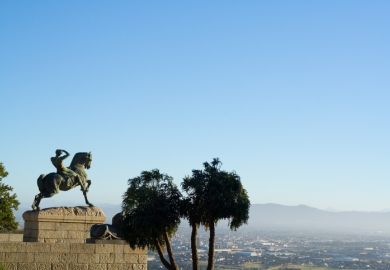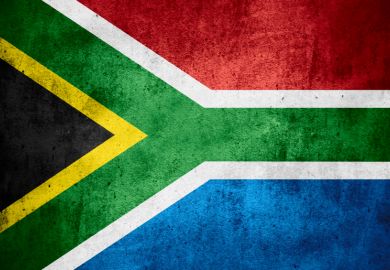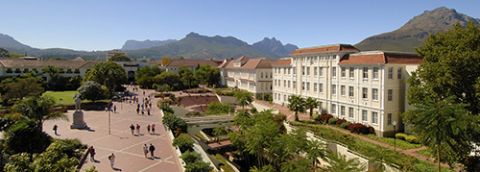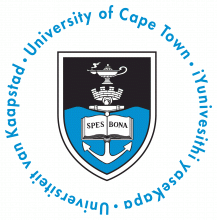When apartheid ended on 27 April 1994, it was a great day for South Africa but “a disaster for the University of the Western Cape”, according to Tyrone Pretorius, the institution’s current vice-chancellor.
This might appear an odd admission from the leader of a university that was historically confined to coloured people (used in South Africa as the term for people of a mixed-race background) – particularly given that the institution was in the 1980s the first in the country to admit students of all races and was, according to Pretorius, subsequently “punished severely in terms of resources” by the state.
“At one point, the university received about 46 per cent of what it was supposed to receive from government,” he says. “It was done under the guise of fiscal constraints, but the University of the Western Cape was most severely penalised.”
But it was precisely because the university was so in favour of social reform that it had something to lose in 1994, according to Pretorius: “In the late ’80s, early ’90s, when it was becoming clear that things were going to change politically, we had a lot of progressive scholars in South Africa who wanted to be associated with the identity of UWC as a progressive university. [So] when the ruling party was looking for their ministers and their [directors general] and their civil servants, they targeted UWC.”
The first to be lured away was the vice-chancellor, Jakes Gerwel, who became director general of the Office of the President of South Africa, and later also secretary of the Cabinet, after Nelson Mandela was elected. Several others followed when Mandela announced his first Cabinet.
“At one point, more than 50 per cent of the new Cabinet came from the University of the Western Cape,” says Pretorius. “So in the short space of five to six months, we lost most of our established top scholars.”
At the same time, while the university previously drew in students from across the country, many of whom were not able to study at the white-only institutions on their doorstep, liberation meant that black and coloured students could for the first time enrol anywhere. For financial reasons, many who may have previously gone to Western Cape chose their nearest university instead, resulting in Western Cape’s student numbers halving to 8,000 between 1992 and 2002.
However, the university also benefited from having champions in government. For instance, when a national working group in 2002 advised that it should be merged with the neighbouring Peninsula Technikon, claiming that it was no longer viable as a stand-alone university, the minister of education, then Kader Asmal, refused to accept the recommendation. Asmal was a former professor of human rights at Western Cape.
“That [merger] would have meant that we lose our identity as a progressive institution,” says Pretorius.
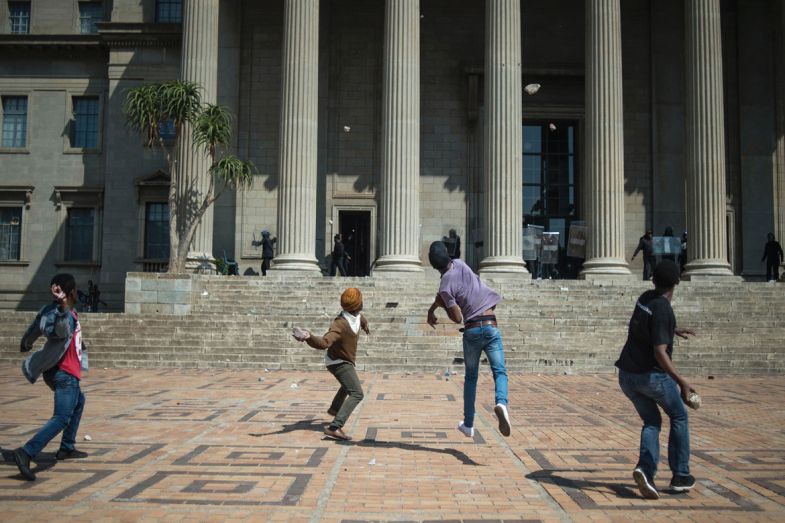
While Western Cape’s anti-apartheid credentials no longer mark it out from other universities in the “Rainbow Nation”, questions remain about the extent to which the country’s higher education system has really changed in the 26 years since racial restrictions were abolished. So to what extent have the post-apartheid promises of universal access to quality higher education been realised? And what challenges remain?
In 1997, South Africa published a programme for the transformation of higher education, with the core aim of establishing a single, coordinated system. The National Plan for Higher Education, published four years later, outlined a framework for implementing and realising the transformation. Its goals included producing the graduates needed for South Africa’s social and economic development, achieving equity and diversity in admissions, sustaining research and restructuring an institutional landscape that now consists of 26 public universities, several private institutions and 50 technical vocational education and training (TVET) colleges.
Meanwhile, the first policy objective of a 2014 White Paper on post-school education and training was to develop “a post-school system that can assist in building a fair, equitable, non-racial, non-sexist and democratic South Africa”. It included a plan to have at least one TVET college or community college in every district of the country by 2030.
One of the most significant higher education policy changes since apartheid has been the 2017 introduction of free tuition for students from households with a combined annual income of less than R350,000 (£16,500). The move came in the wake of the Rhodes Must Fall and Fees Must Fall protests, which convulsed South African campuses in 2015 and 2016. Previously, the government had mitigated the impact of tuition fees through a system of scholarships and loans, but there were widespread concerns that this was poorly administered.
There are hopes that the new policy, which covers almost two-thirds of existing university students, will improve higher education access and retention among black students, although there are worries that the system is financially unsustainable.
On paper, many of the statistics look impressive. The number of higher education students in South Africa has more than quadrupled since apartheid ended, from 473,000 in 1994 to more than 2 million today, according to a 2019 report written by global tertiary education expert Jamil Salmi and published by the Lumina Foundation.
The report, Measuring the Impact of Equity Promotion Policies: Lessons from National and Institutional Case Studies, which includes a chapter on South Africa, adds that, after Botswana, South Africa has the highest gross enrolment rate in Africa (20 per cent). However, that is still less than half the average among countries of the Organisation for Economic Cooperation and Development (42 per cent). And while access has improved, black students are still grossly under-represented.
South Africa’s population is 80 per cent black, but just 16 per cent of black South Africans enter higher education, compared with 55 per cent of whites, the report says. And even though the share of black 15- to 64-year-olds with a degree doubled between 2008 and 2017, the gap between the share of blacks and whites with a degree has increased slightly, from 15.2 to 16.9 percentage points. Black students’ dropout rates are particularly high, too, in a country where, on average, more than half of students who enrol in a three- or four-year university programme do not complete it.
As Salmi states in the report: “Next to housing, there is no place more revealing of the deep legacy of apartheid than the university system.” He adds that “the violent student protests associated with the “#feesmustfall” movement from 2015 to 2017 were a strong reminder of the unique paradox that has characterised the South African higher education system since the end of apartheid in 1994. On the one hand, the country’s top universities are the African leaders…in terms of advanced training and research output. On the other hand, the higher education system has remained one of the most segmented and unequal systems in Africa, in spite of continuous efforts by the successive democratic governments to expand access and eliminate disparities.”

Meanwhile, the composition of the country’s academy is still very white. According to a 2017 paper, “The changing demography of academic staff at higher education institutions in South Africa”, published in Higher Education, 49 per cent of academics at the country’s public universities are white, 35 per cent are black and 10 per cent are of Indian descent.
However, the paper predicts that black academics will come to outnumber whites at some point between 2020 and 2025 as more white lecturers retire.
A separate report published by the Academy of Science of South Africa in 2019 reveals that black, coloured or Indian-origin academics publish only about one-third of the country’s research – although this share has risen almost 10-fold since the end of apartheid.
Jonathan Jansen, president of the academy and a distinguished professor of education at Stellenbosch University, says the “perpetual lament of South African universities” is how to get more young black scholars into the academy and then into senior positions. “That’s the issue for me for the next 20, 30, 40 years. And I don’t see an easy solution to it,” says Jansen, who leads a major project on behalf of the minister of higher education that prepares promising young academics for the professoriate.
“You can’t manufacture it. You can’t rush people to become professors. It just takes a really long time, even if you have adequate numbers [in the pipeline, which South Africa doesn’t].”
There are also concerns that the coronavirus pandemic will only exacerbate existing inequalities.
Speaking to Times Higher Education, Tawana Kupe, vice-chancellor of the University of Pretoria, said the Covid-19 crisis was likely to lead to “a serious undermining” of the progress that South African higher education has made post-apartheid, given that many students do not have the technological devices, money or stable electricity supply necessary to study online.
Thandi Mgwebi, deputy vice-chancellor for research, innovation and internationalisation at Nelson Mandela University in Port Elizabeth, adds that the coronavirus has highlighted the urgency for South Africa of dealing with more fundamental inequalities.
“Once you sort out the unequal access to food and health, then access to education becomes easier,” she says. “Of course, we can’t wait for one to be solved before we move to the next, so we’ll have to move swiftly on all of these while we’re improving access to education.”
However, Mgwebi says she is optimistic about the future of higher education in South Africa. “The Ministry of Higher Education, Science and Technology is keeping an eye on the goals of transformation. We’ve got earmarked institutional grants and restructuring funds that are targeted at universities to promote equity and access. So it’s not lost: it’s not something that’s at the back of minds and at the back of planning. It’s part of our daily lives to keep an eye on the key performance areas that are linked to transformation, not only in numbers but also in the offerings – the curriculum and research.”
In Salmi’s view, the main reason for the slow progress towards equal university outcomes is the vast differences in students’ backgrounds and home lives, which are amplified by the “very unequal” quality of primary and secondary education. “By the time the pipeline reaches higher education, a lot of bad things have already happened,” he says.
This view is echoed by Tshilidzi Marwala, vice-chancellor and principal of the University of Johannesburg. “[We need] to fix our schooling system so that the students who come to university are prepared,” he says. “As universities, we definitely have to do our part, but our part will not be enough if it is not accompanied by fixing our basic education system.”
The inadequate public investment in universities in South Africa, compared with European and especially Nordic countries, does not help them compensate for these inequalities. Historically black universities, in particular, lack resources, and some are poorly managed, while the TVET sector, which caters primarily for the black population, is “totally underfunded”, according to Salmi.
In Marwala’s view, the underfunding is also evident in the fact that while the higher education system has expanded in terms of student numbers, infrastructure has not kept pace.
“Effectively, we have only built two new universities post-apartheid…so the staff-to-student ratios are still a matter of concern,” he says. “Twenty-six universities within a country of 60 million people seems to be an underinvestment into higher education.”

Wim de Villiers studied at Stellenbosch University, a historically white institution, in the 1970s and 1980s before leaving South Africa in the 1990s to work at universities in the UK and the US.
When he returned to Stellenbosch as vice-chancellor in 2015, it was “a completely different place”, he says. “It is a transformed place in terms of its student body, in terms of the culture of the place and who teaches here and what’s being offered…But to some, it hasn’t changed nearly fast enough. And the quest [is to become] even more transformed and reflect the broader South African population.”
More than 40 per cent of Stellenbosch’s 20,000 undergraduates and more than half of its 12,000 postgraduates are of BCIA – black, coloured, Indian or Asian – origin, says de Villiers. However, he adds, one of the biggest challenges he faces is finding BCIA academics.
Almost 30 per cent of the university’s scholars are in that category thanks to a university strategy that has included targeted recruitment, promotion and retention of BCIA scholars. The government’s New Generation of Academics Programme (nGAP), which was launched in 2015 and is jointly funded by the state and universities, has also helped in training early career academics and appointing them to permanent posts. But de Villiers says hiring black academics remains a difficult task, not helped by the relatively low salaries and lack of job security in academia compared with the private sector.
One of de Villiers’ key priorities during his leadership at Stellenbosch has been to increase income from philanthropy, which now makes up about 8 per cent of his annual budget. These funds are used to provide financial aid for “the missing middle” of students, those who do not qualify for free tuition but cannot afford to pay fees. They also help to fund postgraduate students, who are key to creating a more diverse academic pipeline.
As well as the secondary school system, another big challenge, in de Villiers’ view, is the country’s financial position. Even before the pandemic, “the economy was in the toilet”, he says. Now, the decline in tax revenue is such that he and “a number of my fellow vice-chancellors have significant doubts” about whether the free tuition scheme is sustainable.
De Villiers is also doubtful that higher education will be high up the government’s post-pandemic agenda; the areas ministers are planning to boost are health, law and order, and basic education, he says. Meanwhile, the country has already announced that its main research funding body, the National Research Foundation, has lost 10 per cent of its budget.
Western Cape’s Pretorius says that when the institution opened in 1960, it was never intended to be “a serious university”: the government allowed it to offer programmes only in limited areas, such as the humanities, social work, teacher education and theology.
“There was the saying by the then minister of education that you shouldn’t educate blacks to the degree that their aspirations cannot be met by society. So giving us a medical school would mean creating aspirations that society cannot meet,” he says.
Today, the university is flourishing in areas such as nanotechnology, astrophysics, bioinformatics and public health, as well as the humanities, Pretorius adds. But “to some degree we feel resentful that what catches the eye of the world is your current achievements rather than your current achievements in the context of where you’ve come from,” he says. “While our achievements are modest compared to the big names in the game, if you contextualise them, they are remarkable.”
And this lack of context, of course, affects the success of Western Cape’s graduates. Hence, Pretorius’ goal is for the university to have “some kind of name recognition outside of academia” so that its graduates “have a fair shake…beyond the borders of South Africa”.
For Mamokgethi Phakeng, vice-chancellor of the nearby University of Cape Town, context of a different sort affects how her institution is regarded. Cape Town, like Stellenbosch and the University of the Witwatersrand, feels greater pressure to transform than other institutions, she says, not only because of their history as whites-only universities but also because they are the highest-ranking in the nation. And yet that elevated position can cloud some profound achievements.
“[Cape Town] is the only university where the top leadership are 100 per cent women, but it’s not celebrated in this country. Why? Because we are a previously white university and ranked top in Africa. So we have the burden of history intertwined with the burden of success,” she says.
However, she concedes that South African higher education in general “hasn’t yet figured out how to support poor and working-class students for success” – which involves reflecting on “how you teach, how you engage, how students feel on the campus. If students come to a university and they feel the space is not welcoming, they think it’s not their space: they think they’ve been done a favour by coming into that space [and feel] insecure. And once you lose intellectual confidence, the possibilities of success are diminished tremendously.”
Phakeng believes the solution lies in recruiting academic staff who look and speak like their students, and then ensuring that these scholars are properly trained.
“I can see how my engagement with students makes students feel that this is their space,” she says. “And much of it is because I look like them, I speak like them…The fact that they don’t speak the Queen’s English is OK…A lot of [issues] just come off the table.”
The problem is that “redistribution of privilege” is a key area of post-apartheid transformation that has not yet been achieved. This means that issues around institutional culture and systemic racism have not properly been addressed, Phakeng says. “It’s not just about giving bursaries for students and making sure that they have access. It’s going beyond that, critiquing yourself as institutions and saying: ‘But this can’t be right! How do we make sure the voice of the previously marginalised is much stronger?’”
And she is conscious that redistribution of privilege is “the most threatening form of transformation” and, therefore, “it’s the one that goes much slower…First of all, it requires an acceptance that there’s a problem. It requires a willingness to give up your privilege. And the willingness to give up your privilege means that you have to be comfortable that you will be overlooked for certain positions and people like you might be less and less in positions of power and that’s OK. And you’ve got to accept that people who come to your space might…think and do things differently.”
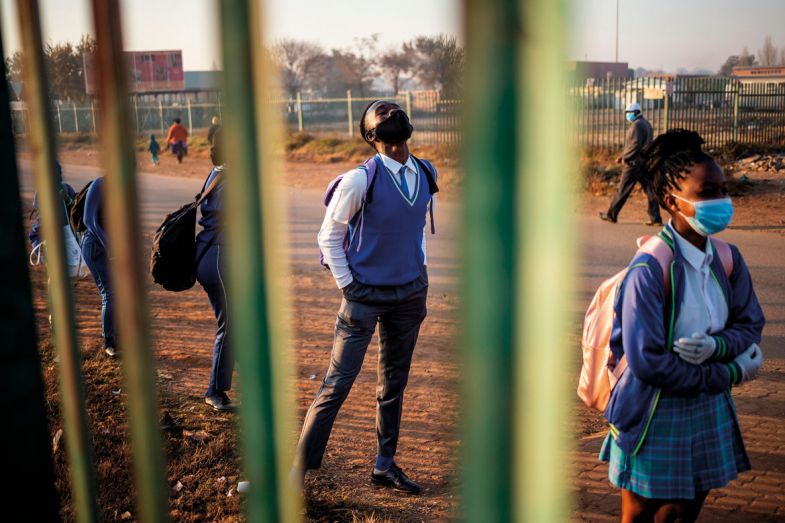
The University of the Witwatersrand – known colloquially as Wits – is often hailed as one of South Africa’s great success stories in terms of equity and access. In 1994, about 70 per cent of the institution’s students were white; now 84 per cent are black, according to its vice-chancellor and principal, Adam Habib – and it is notable that the Fees Must Fall movement began at the university in 2015.
Salmi’s report observes that the proportion of academics at Wits who are black increased from 40 per cent to 51 per cent between 2013 and 2019, while 90 per cent of administrative staff are black. Meanwhile, almost half (47 per cent) of students at the selective, research-intensive university – second only to Cape Town among South Africa’s representatives in Times Higher Education’s World University Rankings – are first-generation, and 22 per cent have a family income below R350,000.
Habib, who is one of the country’s most outspoken university leaders and was an activist during the struggle against apartheid, says South Africa’s higher education system has, “in the space of 20 years, achieved more than probably any country globally”.
“Having said that, given the huge chasm that we have, it isn’t enough,” he adds.
Habib believes there is now “non-racialised access” to higher education, but there is still a problem with class. Few very poor students go on to university, partly because of the weak school system in impoverished areas of the country. Those who do enrol generally go to historically black universities.
“Ironically, the poorest students go to the poorest universities, which have the least resources to do the kind of enabling that is required by poor students,” he says – although he adds that the tuition fee policy changes mean that historically black institutions now “have more cash than they’ve ever had” because more of their income is covered by the state.
Like Stellenbosch’s de Villiers, Habib – who will take over as director of SOAS University of London in January – also worries about the “missing middle”, those young people who cannot afford the cost of university but who do not qualify for free tuition. His view is that the government should have created a loan system so that graduates have to pay back into the system and future generations can benefit. However, politicians were “too interested in looking good” to adopt such a policy. Free tuition was announced by outgoing president Jacob Zuma in early 2018, just after Cyril Ramaphosa was elected to succeed him.
“They left the middle classes out, and they’re leaving the universities to deal with the challenge every year,” says Habib. “My argument is we can’t resolve this – only government can.”
The idea of a loan system has been criticised by student leaders, who argue that it would in effect create a black tax and increase inequality. But Habib says it would be better than any alternatives.
“The case that they will look at is the UK and how loans [there] have become a division,” he says. “Is that true? Absolutely. The question is, would you rather have loans or not have anything at all? Would you rather have a graduate with debt or not have a graduate at all? That’s the question, and that’s the debate.”
Salmi also endorses an income-contingent loan scheme for South Africa, to ensure higher education’s long-term financial sustainability. But the country must also get “serious about reallocating sufficient resources to upgrade the historically black universities and the TVET system, which have been structurally underfunded”.
He adds that the country needs a clear approach to private universities, whose students are currently not eligible for the government’s free tuition scheme. In his view, the state should either ban private institutions or allow their poorest students to receive free tuition.
Meanwhile, he says, “a big effort” should be made to improve the quality of the University of South Africa (Unisa), the country’s largest university and the biggest distance education institution in the African continent. “They have a big number of students enrolled but very small numbers of students actually graduating. There is a great potential there, but it needs to be strengthened,” he says.
Stellenbosch’s Jansen calls for a more extreme approach. He thinks that about half a dozen universities in South Africa need to be closed down entirely “because they are not universities: they are holding places for black youth who cannot get into the marketplace. That doesn’t mean that there aren’t individuals [there] doing nice things, but if you shut down for a third of the academic year because of riots and protests and theft and assault and any number of reasons for a completely dysfunctional timetable, how on earth are you going to guarantee to the public that the people coming out of there as teachers or as artists or journalists are really top-quality people?” he asks.
“Who goes there? Not middle-class students. Not white people’s kids. Desperadoes – the people who have no options. I really believe that the worst you can do to black people is to give us exactly the same thing [as white people] except worse…In many ways, we are giving them Bantu education all over again”, he adds, referring to the Bantu Education Act of 1953, which enforced racially separated educational facilities during the apartheid era.
In addition to closing some poorly performing institutions, Jansen says that South Africa’s de facto two-tier higher education system needs to be established in law, with one group of universities focusing on high-level research and another focusing on high-level teaching, both well funded through a combination of state investment and philanthropy.
Jansen, who was vice-chancellor of the University of the Free State from 2009 to 2017, admits that implementing this would be a challenge. But the designated teaching universities would be incentivised to follow the strategy if their funding was tripled, he says, enabling them to hire top academic teachers and to build excellent infrastructure, as leading US liberal arts colleges have done. And this restriction of activity would stop institutions that cater largely to poor students from using up enormous amounts of money and space “trying to do everything” when they can barely carry out their main priority of teaching well, he explains.
Jansen says that a key barrier to progress in South Africa is that “because our history has been so racialised, when you have to deal with these issues, race gets in the way”.
His restructuring idea, he insists, is “what you call politics in the best sense of the word. This is called leadership. But I’m afraid we don’t have that because at the back of the mind of every Cabinet minister, every MP, in this country is the wrongful calculation that when you talk like this, you are again disadvantaging the disadvantaged. In other words, as long as we see elite universities as white universities and the rest as black, there is no way out of this conundrum.”
Jansen points out that designation of institutions as research or teaching universities does not have to flow simply from their racial histories. But the adoption of such a reform requires politicians to see higher education “not just as a sausage machine for the marketplace, but as an imaginative space in which you can produce top thinkers, top intellects and the best professionals across different fields”.
In other words, it takes ministers who have “a dedication to the sector. We haven’t had that kind of leadership for a very long time in South Africa.”
POSTSCRIPT:
Print headline: The long road to equality
Register to continue
Why register?
- Registration is free and only takes a moment
- Once registered, you can read 3 articles a month
- Sign up for our newsletter
Subscribe
Or subscribe for unlimited access to:
- Unlimited access to news, views, insights & reviews
- Digital editions
- Digital access to THE’s university and college rankings analysis
Already registered or a current subscriber?

